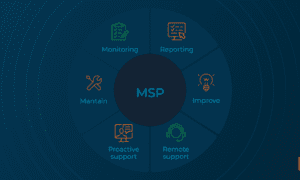As we all know, Ethernet cables are an essential component for network transport around the world. These lines connect the network to your devices, such as computers and WiFi routers. And these cables come in a range of types, but you’re not sure which one to buy for your home.
So here’s a guide for you in which we cover Cat5e, Cat6, and Cat7, their applications, and which one you should choose based on your requirements.
So, let’s get started!
Cat5e Cable
Cat5e cable is an improved version of Cat5 that performs the same functions as Cat5. This Ethernet cable is one of the most popular Ethernet cables for home use. And the reason is that it provides you with the most reliable and stable internet without requiring you to go through a complicated installation process.
It was created as an improved version of Cat5, with enhanced letter e representations. There will be no signal issues, making it a reliable alternative for daily browsing as well as connecting laptops, wifi routers, printers, and smart televisions.
If you live in an area far from the main internet source, this will provide you with up to 1 Gbps, which is enough for most home internet packages. You may also run Cat5e across your rooms and home with minimal signal loss.
Cat6 and Cat7 are faster than this, but this is more than enough for household use because it does not require as much hassle.
Specifications:
- Speed support up to 1 Gbps (Gigabit Ethernet).
- Bandwidth of 100 MHz.
- Maximum recommended cable length: 100 meters.
- Works with RJ45 connectors.
- Reduced crosstalk compared to older Cat5.
Pros:
- Very affordable and easy to find.
- Works perfectly for basic home internet needs.
- Flexible and easy to install.
- Supports Gigabit speeds for most home connections.
- Compatible with almost every router and device.
Cons:
- Not suitable for high-speed gaming or heavy data transfers.
- Lower bandwidth compared to Cat6 and Cat7.
- May experience interference in crowded electrical environments.
- Not future-proof for very fast internet plans.
Better for Home Use or Not?
Yes, Cat5e is ideal for general everyday uses such as browsing the internet, HD streaming, and connecting everyday devices. Another advantage is that it does not require you extra installation hassle and is a cost-effective solution as well.
Moreover, you can run the wires throughout your home with no signal loss and consistent internet speed. That is why it is considered the most popular choice for residential use.
Best For
If you only use the internet for basic requirements, like not for office work, and do not require high-speed internet, this may be the best option for you.
Cat6 Cable
Cat6 is the sixth generation of Ethernet cable, and it is designed to handle significantly greater speeds while providing improved interference prevention. Cat6 supports rates of up to 10 Gbps over shorter distances and has a high bandwidth capacity of 250 MHz, making it ideal for smoother and more stable data transfer even in areas where several cables or electrical devices can create signal issues.
Cat6 e cables may be a better choice if you require higher internet speeds and improved performance for streaming, gaming, or using several devices at the same time.
Cat6 cables are thicker than Cat5e and could be slightly more difficult to install. Moreover, these are more expensive than Cat5e, but they can be a long-term investment if you require a fast and reliable wired connection.
Overall, Cat6 Ethernet cables are the most commonly used, particularly in offices and business environments, due to their performance and speed.
Specifications:
- Supports speeds up to 10 Gbps (up to 55 meters).
- Bandwidth capacity of 250 MHz.
- Enhanced shielding to reduce interference.
- Compatible with RJ45 connectors.
- Maximum cable length: 100 meters for standard use.
Pros:
- Much faster and more stable than Cat5e.
- Handles heavy data usage and simultaneous connections easily.
- Great for gaming, 4K streaming, and smart homes.
- Better noise reduction and less crosstalk.
- Future-proof for most home internet upgrades.
Cons:
- More expensive than Cat5e.
- Slightly thicker and harder to bend.
- Installation might be tricky in tight spaces.
- Not needed if your internet speed is very low.
Better for Home Use or Not?
Yes, Cat6 is an excellent option if you live in a modern home, your family members are using many devices at the same time, and you do not want any interruptions in internet speed.
Best For:
Cat6 can be the ideal option if you run a business, have your own office, and do not want slow data speeds.
Also, if you live in a modern home and use a lot of data streaming devices, smart devices, gaming consoles, and security systems, and you don’t want network performance issues.
Cat7 Cable
Cat7 cables are designed for incredibly fast and reliable connections. Up to 600 MHz of bandwidth is supported, and depending on the distance, it can give you rates of 10 to 40 Gbps.
Heavy shielding is one of Cat7’s best qualities; each wire inside the main protective wire is shielded separately to stop EMI and RFI from interfering with data transmission via the cable.
Even in places with a lot of electronic devices or numerous cables running side by side, this Cat7 protects signals from interference when you’re using the internet.
Because of its thickness, this may be more expensive and more difficult for you to install. And this is not made for you if you are looking for home use, because it works better in heavy setup environments.
Another significant drawback is that different brands produce Cat7 in different ways because it is not officially standardized by IEEE or EIA, and does not use the standard RJ45 connector.
Specifications:
- Supports 10–40 Gbps speed depending on cable length.
- Extremely high 600 MHz bandwidth.
- Strong shielding (S/FTP or F/FTP).
- Uses GG45 or TERA connectors (RJ45-compatible versions also exist).
- Designed for professional-grade networking.
Pros:
- Extremely fast and stable performance.
- Excellent shielding against interference and noise.
- Suitable for heavy data transfer and professional environments.
- Highly durable and built for long-term use.
- Future-proof for advanced networking systems.
Cons:
- Expensive compared to Cat5e and Cat6.
- Thick and less flexible, hard to install.
- Often unnecessary for a normal home internet.
- May require special connectors in some versions.
Better for Home Use or Not?
In general, no, as this is specifically designed for professional studios, data centers, industrial work, and server rooms. The most suitable connections for residential use are Cat5e and Cat6, but not this one. First of all, you don’t need such a high speed at home, and secondly, this is heavy and very expensive.
Best For:
If you’re working in a professional environment and need noise protection, reliability, and connections that are incredibly fast and stable, then Cat7 is made for you.
Cat5e vs Cat6 vs Cat7
| Feature | Cat5e | Cat6 | Cat7 |
| Speed Support | Up to 1 Gbps | Up to 10 Gbps (short distances) | Up to 10–40 Gbps, depending on length |
| Bandwidth | 100 MHz | 250 MHz | 600 MHz |
| Shielding | Unshielded or lightly shielded | Better shielding than Cat5e | Heavy shielding (S FTP or F FTP) |
| Connector Type | Standard RJ45 | Standard RJ45 | Special connectors like GG45 or TERA |
| Max Cable Length | 100 meters | 100 meters | 100 meters |
| Interference Protection | Moderate | High | Very high |
| Cost | Low | Medium | High |
| Best For | Basic home use | Gaming, streaming, and offices | Data centers, professional setups |
| Flexibility | Very flexible | Slightly thicker | Thick and less flexible |
| Future Proofing | Basic | Good for most homes | Very high, but not needed for normal users |
How to Choose the Right Ethernet Cable?
Your Internet Speed
First, you have to check your internet speed and also think about whether you will need a faster data connection in the future or not. If you only want up to 1 Gbps speed, then Cat5e could be enough for you. But if you’re planning to upgrade your plan and get a fast fiber connection, then Cat6 will work better for you than Cat5e.
Type of Usage
And the second factor to consider is the purpose for which you are using the internet. If you are using it for basic tasks like watching social media and simple streaming, then you should go for Cat5e. But if you need the internet for gaming, heavy file transfers, and 4K streaming, then Cat6 is a better option.
And if you require extremely high network speed for data centers, servers, or high-end data setups, then you should choose Cat7.
Future Upgrades
Before choosing an Ethernet cable, first consider whether you will need to upgrade your setup in the future. If not, you can go with Cat5e. But if you are planning a heavy setup, you should choose Cat6 from the start, so you won’t need to replace the cable and save money and installation efforts later.
Distance and Interference
If you are living far from the internet source and have many electronic devices that may cause signal interference, you should choose a cable with heavy shielding, like Cat6. This will provide a more reliable and stable connection without any signal disruption..
Budget
To install any cable, you will definitely need to consider your budget, so it also matters when choosing the right cable for you. You can choose Cat5e if you only need internet for basic home use and are looking for an affordable option. Cat6 and Cat7 are more expensive, so if you don’t need higher-speed connections, there’s no need to spend extra money on them.
Device Compatibility
Always check your device ports, like WiFi routers and computers, to ensure the cable fits properly. You can choose Cat5e or Cat6 because they work with all standard RJ45 ports, but Cat7 requires special connectors. So, you don’t need to invest in Cat7 unless you specifically need a high-speed data connection.
Wrap Up:
Choosing the right Ethernet cable depends on how you use your internet at home. Cat5e is perfect for basic tasks like browsing, streaming, and connecting everyday devices because it’s affordable, simple to install, and reliable for standard speeds. Cat6 gives you faster performance and better stability, making it ideal for modern homes with multiple devices running at once.
Cat7, however, is built for professional environments and usually isn’t needed for normal household use due to its higher cost and complex installation. So for most people, Cat5e or Cat6 will easily cover their internet needs, while Cat7 is only worth choosing if you’re working in a heavy-data or advanced setup.





























